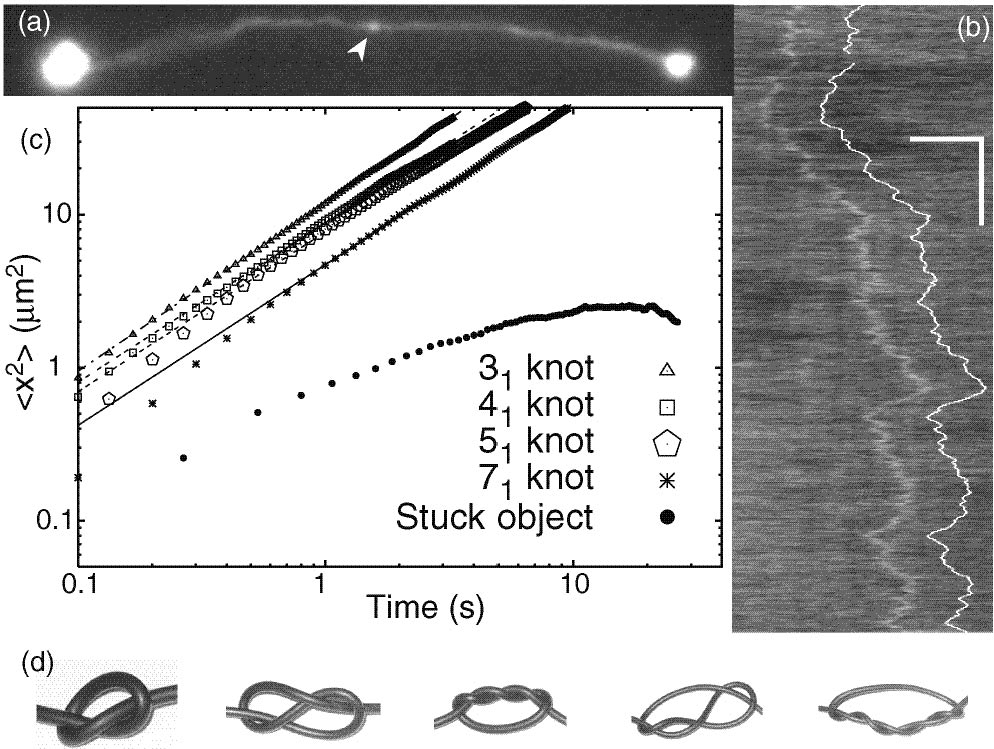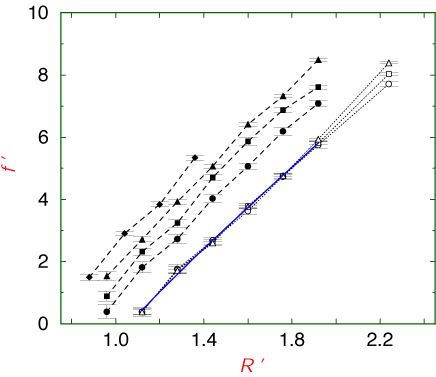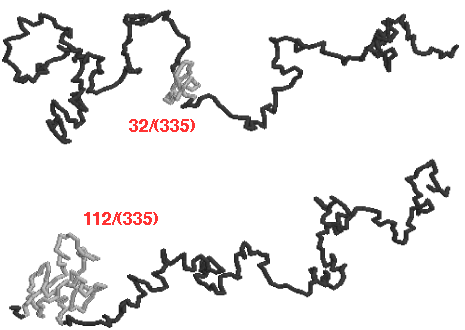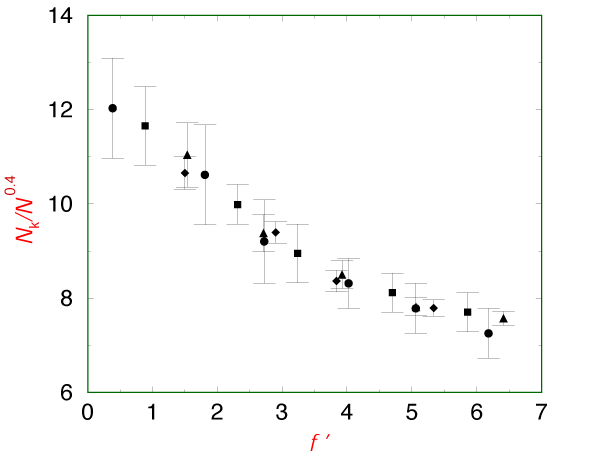![]() Disclaimer
#1: The 'size of a knot' is not mathematically
well-defined, yet ...
Disclaimer
#1: The 'size of a knot' is not mathematically
well-defined, yet ...
Pulling Knotted Polymers
![]() Disclaimer
#1: The 'size of a knot' is not mathematically
well-defined, yet ...
Disclaimer
#1: The 'size of a knot' is not mathematically
well-defined, yet ...
![]() "Complex
knots in Single DNA Molecules,"
"Complex
knots in Single DNA Molecules,"
X.R. Bao, H.J. Lee, and S.R. Quake, PRL91, 265506 (2003)

In control experiments ... (knots) are present about 10% of the time, ...
![]() O.
Farago, Y. Kantor and M. Kardar, Europhys.
Lett. 60, 53 (2002)
O.
Farago, Y. Kantor and M. Kardar, Europhys.
Lett. 60, 53 (2002)

![]() Scaling theory predicts that for an unknotted
polymer of length N
Scaling theory predicts that for an unknotted
polymer of length N
![]()
![]() Comparison of simulation results for sizes N=225
(diamonds), 335 (triangles), 500 (squares), 750 (circles), with (solid)
and without (open) a knot in the polymer:
Comparison of simulation results for sizes N=225
(diamonds), 335 (triangles), 500 (squares), 750 (circles), with (solid)
and without (open) a knot in the polymer:

![]() The presence of the knot introduces a new
length scale into the problem
The presence of the knot introduces a new
length scale into the problem

![]() Can we use the lack of scaling to deduce a
knot size?
Can we use the lack of scaling to deduce a
knot size?
![]()

![]() Interestingly, the correction to scaling exponent
of 0.56 in d=3 is consistent with t=0.4
Interestingly, the correction to scaling exponent
of 0.56 in d=3 is consistent with t=0.4![]() 0.1.
0.1.
![]() However, a recent study
by
However, a recent study
by
B. Marcone, E. Orlandini,
A.L. Stella, and F. Zonta (cond-mat/040523)
claims t=0.75![]() 0.14.
0.14.